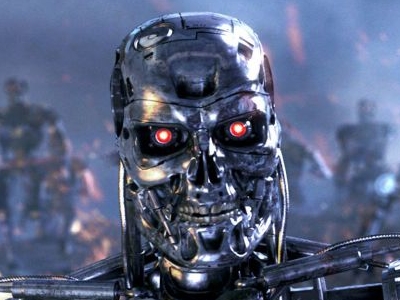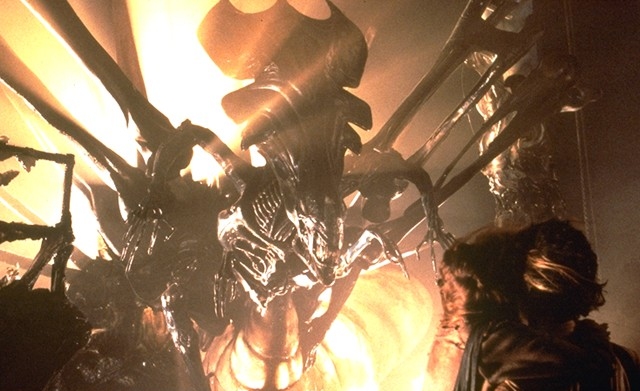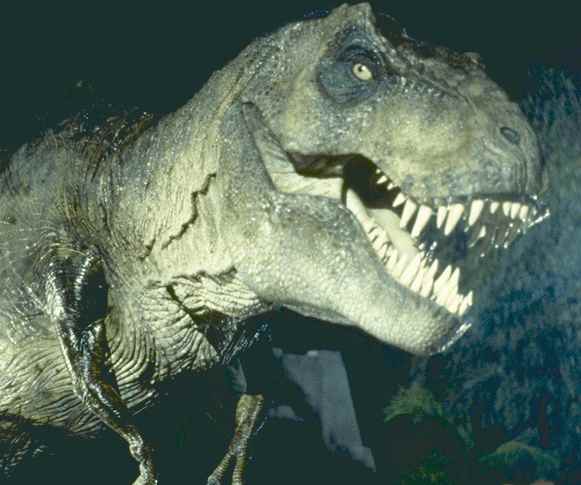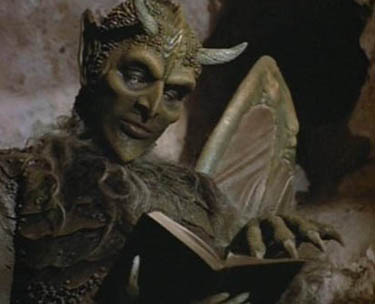Stan Winston has died, and it’s cause for sadness on multiple levels. First there’s the loss of the man himself, gone too young at 62 after a seven-year battle with multiple myeloma. Then there’s the knowledge that we’ll never see more of his masterful effects work onscreen; Winston, whose studio website can be found here, was responsible for some of the most iconic and exciting creatures in science-fiction and horror films of the last three decades.
His death also leaves unanswered the ongoing question of what is happening to visual effects in this era of digital colonization — what they are on the way to becoming, what they should be doing — for Winston occupied a unique industrial niche at the current renegotiation of practical and optical magic. Winston’s monsters, animals, and robots were, for the most part, built of solid matter and filmed live before the camera (rather than layered in later through CG manipulation). Yet he never confined himself to a single effects “channel”; a renaissance talent, his craft extended from makeup to stop-motion animation and full-sized animatronics. Even in something like The Terminator (1982), whose low-budget production technology seems rudimentary in comparison to contemporary franchise blockbusters, Winston’s creations carried us smoothly over the rickety joins from shot to shot, giving the T-800 a terrifying coherence — indeed, a living personality — whether that mechanical assassin was played by a miniature stop-motion model, a full-sized torso and head manipulated atop the shoulders of an off-camera operator, or Arnold Schwarzenegger himself, his glowering face punctuated by prosthetically torn skin revealing a silver cranium. By the same token, his suite of bodysuits, marionettes, and makeup gave life to a swarm of snaky xenomorphs in Aliens (1986), culminating in what was perhaps his predigital masterpiece, the Alien Queen.
But Winston’s artistry should not be considered simply in dialectical terms, as an alternative to or rejection of CG. Beginning with the landmark Jurassic Park in 1992, Winston’s creatures shared the workload with their digital doubles. CG velociraptors and T-Rex were responsible for action stunts (when it was necessary to see their whole bodies, from snout to claw), but Winston’s animatronic performers handled the beauty-spot closeups, providing long stretches of undeniable physical proximity which arguably sold the illusion to audiences, propping up the digital shots whose comparative scarcity was inversely proportional to the press and fan hype they received.
Winston’s ability to move fluidly between effects modalities, combined with his gift for designing entities that were simultaneously bizarre and scientifically plausible, kept him at the forefront of fantastic filmmaking right up to the end, with recent projects including Artificial Intelligence (2001), Constantine (2005), this year’s Iron Man, and the upcoming fourth Terminator sequel. In each of these, Winston’s work belied the “digital divide,” demonstrating a sensibility that superceded technological differences and gave our eyes and minds something to believe in. But it’s Winston’s earlier work that I’ll remember most fondly: the shapeshifting arctic invader in The Thing (1982), the scorpion-faced hunter in Predator (1987), Johnny Depp’s plaintive cyborg in Edward Scissorhands (1990). My most prized memory, in fact, is of Winston’s first credited makeup job, 1972’s Gargoyles, which I caught on TV as a little kid staying up much too late one night. That film was crude and potent, its grip due entirely to gargoyle designs whose expressive faces and gravelly voices made them perfect movie monsters: scary yet somehow sentimental, pulsing with an inner life both recognizably human and fascinatingly alien.
A final note of sadness: Stan Winston was slated to be the keynote speaker at a conference I’ll be attending this fall, Film & Science: Fictions, Documentaries, and Beyond. It will be a very different affair now, but still, I hope, a valuable one — an opportunity to consider and celebrate a remarkable man and his life’s work.






Thanks for this. A big surprise. No one knew about this (in public at least), just like no seemed to know about Pollack.
I’m still stunned by how much of the effects in Terminator 2 are actually practically done! It’s a similar situation to Jurassic Park; those two films’ reputation for their “groundbreaking CGI” are actually due to a few very small moments — surprisingly, much of the generated suspense and reaction shots of creatures in these films were indeed accomplished on-set, with practical molds (in the case of T2) and sound effects design (Jurassic).
But personally, his stuff in A.I. is perhaps some of his most transcendent work, to me… Edward Scissorhands is also a personal favorite of mine, and the blend of techniques in Iron Man is, I would argue, seamless.
Footnote: Winston also designed a Superman suit for the aborted McG-directed version in the early 2000s (I’ve got a pic somewhere if you’d like to see it)…
That’s a great shot from Gargoyles — never seen that, will have to catch it sometime. Also have got The Thing on DVD but haven’t watched it yet…
A sad day…
You’re in for a treat with both Gargoyles and The Thing, Michael. Might be hard to find a copy of the former on DVD; the only edition I see online is from 2000 and now selling for upwards of $50!
Agree all around re: the irony of JP‘s and T2‘s historical place as CG breakthroughs. Both films are brilliant in their way; Judgment Day, I think, qualifies as a genre masterpiece. But yes, what’s great about the FX is how they are integrated at all levels, including all-important factors such as story and character.
Thanks for getting me the heads-up about Winston. Sad to know we won’t be crossing his path in Chicago.
http://www.aintitcool.com/node/37109
James Cameron has written in with some very nice, personal comments about Stan. Quotes from others may be forthcoming…
Great Stan Winston quote (I believe it’s accurate but can’t verify the source, found it on the AICN talkback):